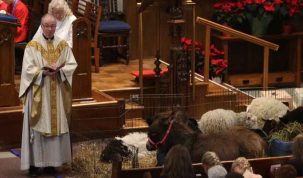As part of Carbon Monoxide Awareness Week, happening November 1-7, Ontario’s Office of the Fire Marshal is reminding Ontarians about the risks of carbon monoxide and the important steps to take to avoid exposure in their homes.
“Carbon Monoxide Awareness Week is an ideal opportunity to think about carbon monoxide safety and take the necessary actions to keep safe,” said Solicitor General Sylvia Jones. “Check your appliances, know what symptoms to look for in case your family is exposed to carbon monoxide, and be sure to test your alarms regularly to make sure they are functioning as needed.”
Carbon monoxide alarms are required in all Ontario homes that have a fuel-burning (wood, oil, natural gas, propane) appliance, fireplace or an attached garage. This includes appliances that produce carbon monoxide such as furnaces, water heaters, stoves, dryers, barbeques, portable heaters and generators. All fuel-burning appliances should be inspected regularly by a certified technician to check for leaks and ensure there is no build-up of carbon monoxide.
“Carbon monoxide is an invisible, tasteless and odourless gas that can poison the body quickly in high concentrations or slowly over long periods of time,” explained Jon Pegg, Ontario’s Fire Marshal. “Only carbon monoxide alarms, as required by law, can detect the presence of this lethal gas. I encourage everyone to ensure they have alarms installed in their homes and to test them regularly.”
Symptoms of exposure to carbon monoxide may be similar to the flu but without the elevated temperature. Known as the “silent killer,” exposure to carbon monoxide can cause headaches, nausea, dizziness, breathlessness, collapse, loss of consciousness and death. Anyone who suspects they have symptoms of carbon monoxide poisoning should immediately go outside and call 9-1-1.
Quick Facts
- Ontario law requires that a working carbon monoxide alarm be installed adjacent to each sleeping area in homes that have a fuel-burning (i.e. wood, oil, natural gas, propane) appliance, fireplace or an attached garage.
- In a condo or apartment building with a service room, carbon monoxide alarms must be installed in the service room and adjacent to each sleeping area of all condo/apartment units above, below and beside the service room.
- In a condo or apartment building with a garage, carbon monoxide alarms must be installed adjacent to each sleeping area of all condo/apartment units above, below and beside the garage.
- Carbon monoxide alarms in rental units must be tested by the landlord annually and after every change in tenancy.
- In Ontario, more than 65 per cent of injuries and deaths from carbon monoxide occur in the home.
- A Canadian certification mark ensures that smoke and carbon monoxide alarms meet the appropriate Canadian standard; only alarms with the Canadian certification mark should be purchased and installed.
Additional Resources
- Find out more about carbon monoxide awareness week and information on carbon monoxide alarms and Fire Code requirements.
- To find a registered contractor near you, visit CO Safety.
Related Topics
Law and Safety
Ontario’s laws and related information about our legal system, emergency services, the Ontario Provincial Police and victim services. Learn more






















